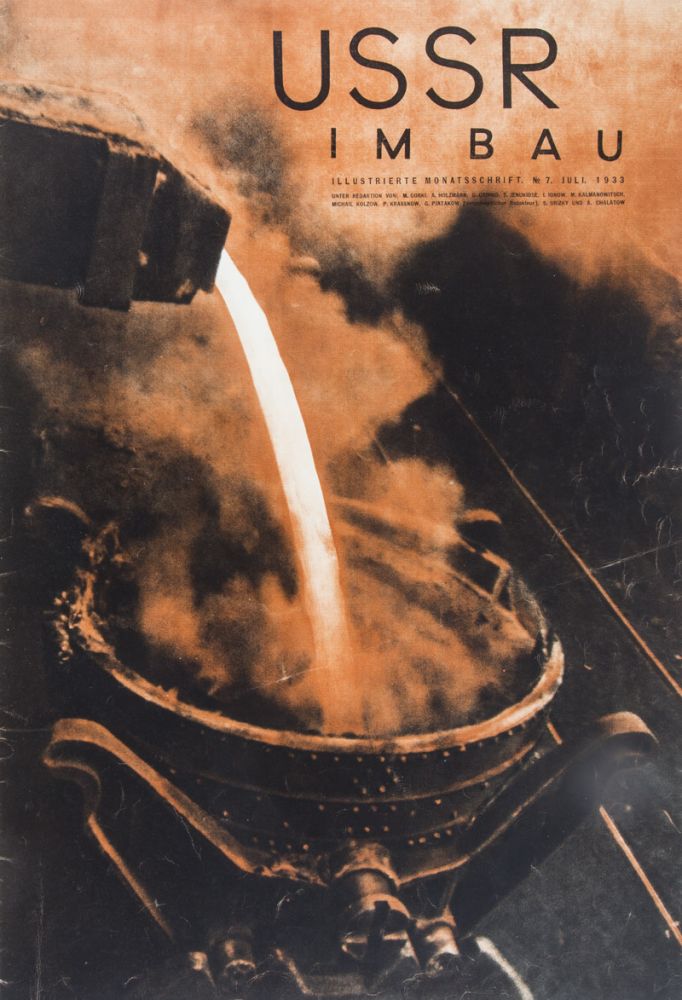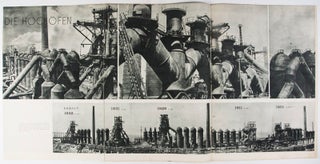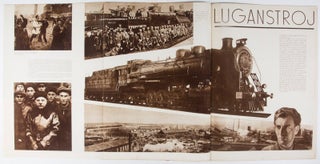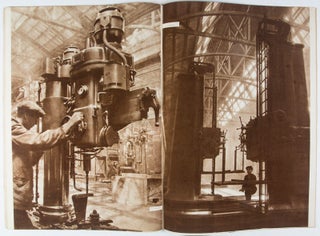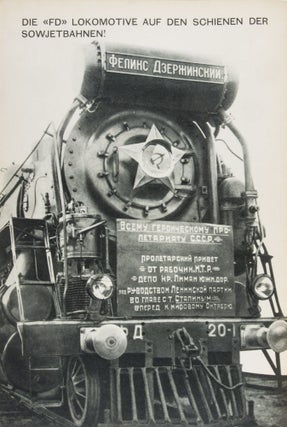USSR im Bau (USSR in Construction) Das Sechzehnte Jahr der Revolution, Nr. 7. Juli. 1933. Dem Makejew-Werk und Luganstroy Gewidmet
Moscow: Staatlicher Kunstverlag, 1933. First edition. Softcover. Folio. Unpaginated. [40]pp. Original decorative wrappers. Photo-illustrated title page. Illustrated with spectacular duo-tone photogravures, this striking issue of "USSR im Bau" (USSR in Construction) is devoted exclusively to the Makejev metallurgical plant, and to the Luhansk steam train factory. The late 1920s and early 1930s were a time of radical changes in politics, economics and society. The developed nations were plunged into the Great Depression, overturning the daily lives of millions of people, making them reconsider their former views of the capitalist system and their own place in it. While the West was in the throes of a financial crisis, the Soviet Union embarked on an ambitious programme of rapid industrialisation. The aim was to completely overhaul the national economy, transforming the USSR into a leading industrial power. In only a few years, no matter what the cost, the country had to undergo a process that had taken decades in Western nations. The Soviet Union launched a grandiose scheme to build modern industries and infrastructure, but there was a catastrophic shortage of tools, technology and knowledge. The deficit could only be filled by importing equipment from the West and inviting foreign experts to Russia. But the USSR was the target of ongoing international trade embargoes and a diplomatic blockade. World business was in no hurry to collaborate with the Soviet Union, while the foreign press contributed to its negative image. The international recognition of the USSR was a long way off. Faced with these problems, the Soviet Union decided to publish a magazine aimed at foreign readers, describing the achievements and positive changes taking place in the USSR – and, indirectly, demonstrating the advantages of the socialist system. In summer 1929, the editors of "Our Achievements," headed by Maxim Gorky, suggested issuing an illustrated supplement. The first test issue of the new publication, called "USSR in Construction" ("SSSR na stroike"), appeared in December 1929. "USSR in Construction" soon eclipsed its predecessor. The new magazine was completely unlike any other periodical of that time: it was published in Russian, English, French, German and Spanish and consisted almost entirely of photographs, accompanied by captions and short essays. The texts were written by such nationally acclaimed journalists as Mikhail Koltsov and Isaac Babel. The printing was of the highest standard. Wrappers age-toned, with sporadic creasing along edges. A 9 1/2" closed tear at centerfold. Text in German. Wrappers in overall good, interior in good+ condition. g to g+. Item #39065
Price: $375.00

